The Importance of Choosing the Right Examination Bed
The right bed choice helps with medical procedures and ensures patients' comfort. Each speciality, such as gynaecology and chiropractic care, has specific requirements that the examination bed must meet. This article will help you understand the critical factors to consider when choosing the right bed.
Types of Specialised Practices
Different practices require beds with unique features to ensure patient comfort and procedural effectiveness. Here's a breakdown of the essential requirements and features for various specialised practices.
Gynaecology
In gynaecology, examination beds must be highly adaptable to accommodate various procedures.
- Specific Requirements: Gynaecology beds should have adjustable height to allow easy access and positioning during exams. Stirrups are essential for gynaecological procedures, and the design should make patients remain comfortable throughout the examination.
- Key Features: Look for beds with easy-to-clean surfaces to maintain hygiene, integrated foot controls to adjust during procedures, and support ultrasound machines.
Dermatology
Dermatology practices require beds that allow for detailed skin examinations and procedures.
- Specific Requirements: Beds should offer full-body support to ensure proper positioning for close skin examinations. Additionally, the bed must remain stable to facilitate special procedures such as biopsies or laser treatments.
- Key Features: Multi-position capabilities are crucial for adjusting the patient's posture during examinations. Good lighting integration helps thoroughly examine the skin, and stability ensures that even minor movements don't disrupt delicate procedures.
Chiropractic Care
Chiropractic practices need beds that can be adjusted to facilitate spinal adjustments and patient manipulation.
- Specific Requirements: Chiropractic beds must be highly adjustable to different body types and the particular needs of spinal adjustments. They should also support various positions during joint and muscle therapy sessions.
- When choosing a chiropractic bed, consider drop sections for spinal adjustments, height adjustability for comfort, and patient-oriented cushioning for support during longer sessions.
- Key Features: When choosing a chiropractic bed, consider drop sections for spinal adjustments, height adjustability for comfort, and patient-oriented cushioning for support during longer sessions.
Cardiology
Cardiology practices require specialised beds that support cardiac procedures and monitoring.
- Specific Requirements: Cardiology beds must support cardiac procedures and provide easy access to the patient during an examination.
- Key Features to Consider: The bed must be compatible with ECG machines and allow for easy adjustments to keep the patient comfortable and stable during prolonged procedures.
Paediatrics
Paediatric practices need beds specifically designed for younger patients, focusing on safety and comfort.
- Specific Requirements: Paediatric beds should be adjustable to fit children of various sizes and designed to prevent falls or injuries. They should also be welcoming to children to reduce anxiety and make the examination process easier.
- Key Features to Consider: Safety rails are necessary to secure young patients. The bed should be adjustable to accommodate different age groups, with easy access for parents and doctors during examinations.
Bariatrics
Bariatric practices require beds that accommodate larger patients while ensuring comfort and safety.
- Specific Requirements: Bariatric beds must support higher weight capacities and be designed to provide maximum comfort for larger patients. They must also be strong enough to meet the needs of bariatric care.
- Key Features to Consider: Wider beds add comfort, and strong lift mechanisms make adjustments and transfers easier, reducing the strain on both patients and healthcare providers.
Fundamental Standards When Choosing Examination Bed
Policies Requirement
Choose beds that meet standards set by relevant authorities, like TGA (Therapeutic Goods Administration) to ensure safety and avoid legal issues. Sticking to these standards protects your patients and keeps your practice in line with legal requirements.
Safety Features
Safety features are essential for patient well-being. Look for beds with integrated safety rails to prevent falls, locking mechanisms to stabilise the bed during procedures, and emergency controls for quick responses in critical situations.
Integration with Specialised Equipment
For specialised practices, the examination bed must work seamlessly with medical devices and accessories needed for specific procedures.
Compatibility with Medical Devices
Ensure the bed is compatible with the medical devices used in your practice, such as ECG machines in cardiology or ultrasound devices in gynaecology. The bed should accommodate these tools without disturbing the examination.
Accessory Options
Consider options such as stirrups for gynaecology and armrests for chiropractic care to make the bed more versatile and meet the specific needs of your practice.
In conclusion, choosing the right examination bed is essential for effective procedures and patient comfort. Each specialty has specific requirements that your bed must meet.
This article has highlighted the key factors to consider, including the unique needs of each practice, the importance of adhering to regulatory standards, and ensuring the bed works seamlessly with specialised equipment. Understanding these factors will help you select a bed that enhances patient care and improves efficiency.
Make the Best Choice for Your Medical Practice
MedicalSearch has been a reliable resource for medical buyers in Australia since 2011. It helps professionals find the right solutions for their practices by allowing them to compare quotes from various reputable suppliers to meet their specific needs and budgets. Don't leave such an important decision to chance—start comparing treatment tables today!
FAQ
Q: How do I select an examination bed for chiropractic care?
A: Chiropractic beds should be highly adjustable to accommodate different body types and support spinal adjustments. Consider features like drop sections, height adjustability, and cushioning for patient comfort during longer sessions.
Q: What should I consider when choosing an examination bed for gynaecology?
A: Look for beds with adjustable height, stirrups, and ergonomic designs for patient comfort during exams. Ensure the bed has easy-to-clean surfaces and is compatible with imaging devices like ultrasound machines.
Q: What are the key features to look for in a dermatology examination bed?
A: Dermatology beds should offer full-body support, multi-position capabilities, and stability for precise procedures. Integration with adequate lighting is also crucial for thorough skin examinations

(1).jpg)


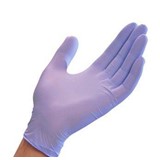
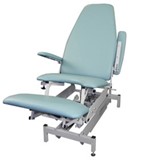
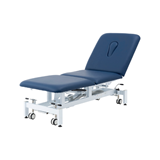

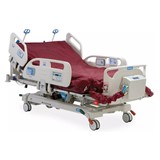
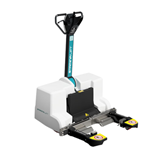
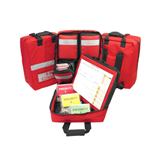
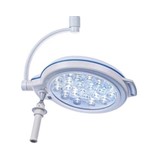
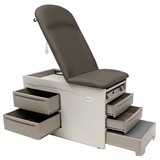
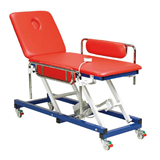
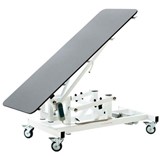
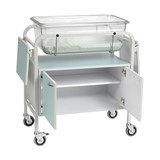
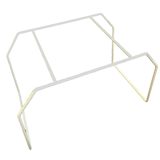
-205x205.jpg)